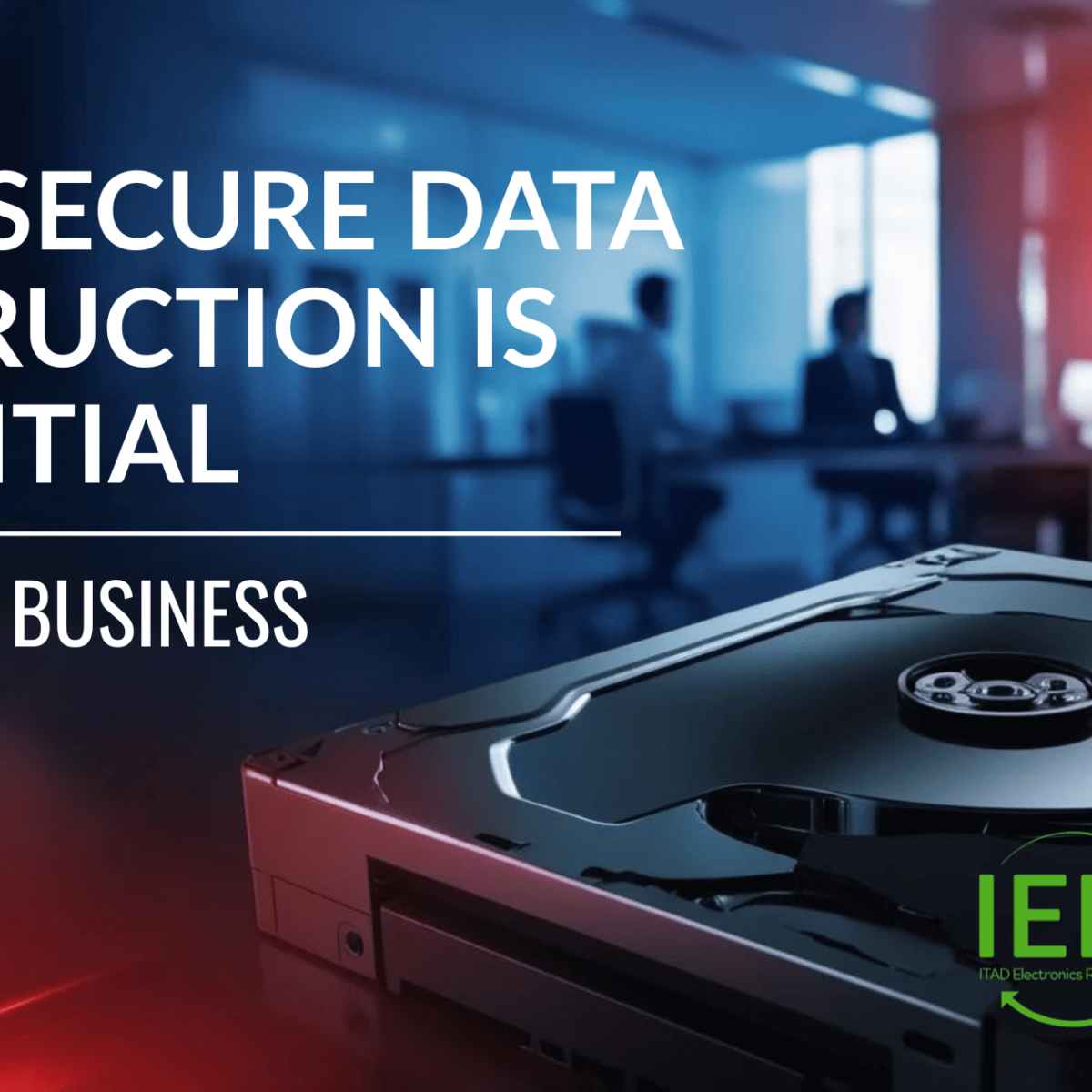Introduction
Electronic waste (e-waste) is one of the fastest-growing waste streams worldwide. With businesses constantly upgrading their IT infrastructure, the improper disposal of outdated electronic devices has led to serious environmental, health, and security risks.
From toxic materials contaminating the environment to data security vulnerabilities, e-waste poses significant challenges. However, businesses can play a key role in mitigating this crisis through responsible IT asset disposition (ITAD) and sustainable e-waste recycling practices.
In this guide, we’ll explore the impact of e-waste, why businesses should care, and what steps your organization can take to reduce its electronic waste footprint.
📌 Related: Efficient, Compliant, and Eco-Friendly IT Asset Disposal for Businesses
1. Understanding the Global E-Waste Problem
E-waste includes discarded electronics, such as computers, servers, smartphones, and office IT equipment. As technology advances, electronic devices are being replaced at an increasing rate, leading to millions of tons of e-waste annually.
Alarming E-Waste Statistics:
- In 2022, the world generated 53.6 million metric tons of e-waste, and this number is expected to increase by 30% by 2030.
- Only 20% of global e-waste is properly recycled, leaving the rest to be dumped in landfills or improperly exported.
- Electronic devices contain hazardous materials, including lead, mercury, and cadmium, which can leach into soil and water when disposed of improperly.
📌 link: EPA Electronics Recycling Guidelines
2. Why Businesses Should Care About E-Waste
Environmental Impact
Improperly discarded electronics pollute air, soil, and water, contributing to climate change and health hazards. Toxic substances from old computers, circuit boards, and batteries can cause long-term environmental damage.
Data Security Risks
Outdated IT assets still contain sensitive company data, which can be recovered if not properly wiped or destroyed. Improper disposal increases the risk of data breaches, identity theft, and regulatory fines.
📌 Related: Why Data Security Should Be Your Top Priority in ITAD
Regulatory and Compliance Issues
Many countries have strict e-waste disposal laws requiring businesses to follow environmental and data protection regulations. Non-compliance can lead to legal penalties, fines, and reputational damage.
Key regulations businesses must follow include:
- GDPR (General Data Protection Regulation) – Ensures proper disposal of devices containing personal data.
- HIPAA (Health Insurance Portability and Accountability Act) – Requires secure disposal of healthcare-related IT assets.
- R2 Certification – Ensures ITAD vendors follow responsible e-waste recycling practices.
📌 link: SERI’s Official R2 Certification Guide
3. What Businesses Can Do to Address E-Waste
Step 1: Develop an IT Asset Disposition (ITAD) Strategy
A structured ITAD program ensures that retired IT assets are securely disposed of, recycled, or repurposed. This includes:
- Inventory tracking of IT assets to monitor lifecycle stages.
- Secure data destruction to prevent unauthorized data recovery.
- Proper recycling and resale of reusable equipment.
📌 Related: A Detailed Guide to IT Asset Disposal
Step 2: Partner with a Certified ITAD Provider
Not all recycling companies follow ethical and compliant e-waste disposal practices. Businesses should work with an R2-certified or e-Stewards-certified ITAD vendor to ensure:
- E-waste is processed safely and legally.
- Sensitive data is properly destroyed.
- Recyclable materials are repurposed instead of being landfilled.
📌 Related: How to Choose an ITAD Vendor You Can Trust
Step 3: Extend the Lifespan of IT Equipment
Rather than disposing of IT assets immediately, businesses can:
- Refurbish and reuse older hardware within the company.
- Donate outdated devices to nonprofit organizations or schools.
- Resell functional equipment to recover value.
These strategies minimize waste and reduce the environmental footprint.
📌 Related: How ITAD Can Generate Revenue for Your Business
Step 4: Educate Employees on E-Waste Reduction
Employees play a key role in reducing IT waste. Businesses should implement training programs to:
- Encourage responsible device usage and maintenance.
- Promote reuse over replacement where possible.
- Ensure proper e-waste disposal practices are followed.
Step 5: Monitor and Report E-Waste Reduction Progress
Businesses committed to sustainability should track their e-waste disposal efforts and integrate them into corporate sustainability reports.
Metrics to track include:
- Amount of e-waste diverted from landfills.
- Number of IT assets recycled, donated, or resold.
- Carbon footprint reduction from responsible IT asset disposition.
📌 Related: How ITAD Can Help You Meet Your ESG Goals
4. The Future of E-Waste Management
As governments and industries push for greener solutions, businesses must adapt to evolving e-waste regulations and sustainability goals. Key trends shaping the future of e-waste management include:
- Stronger e-waste legislation, requiring businesses to be more accountable.
- Advancements in IT recycling technology, making disposal more sustainable.
- Increased focus on the circular economy, encouraging businesses to reuse and refurbish IT assets.
By adopting sustainable ITAD practices, businesses can stay ahead of regulations, reduce costs, and demonstrate corporate social responsibility.
📌 Related: The Impact of R2 Certification on the ITAD Industry
Conclusion: Take Action Against E-Waste
The e-waste crisis continues to grow, but businesses have the power to make a difference. By implementing an ITAD strategy, partnering with certified recyclers, and promoting sustainability within the organization, companies can:
- Protect the environment by reducing electronic waste.
- Enhance data security through proper IT asset disposal.
- Ensure compliance with legal and regulatory frameworks.
- Improve corporate social responsibility by committing to sustainability.
At IER ITAD Electronics Recycling, we help businesses safely and sustainably dispose of IT assets through R2-certified recycling and secure data destruction. Contact us today to develop an ITAD strategy that aligns with your company’s sustainability goals.

